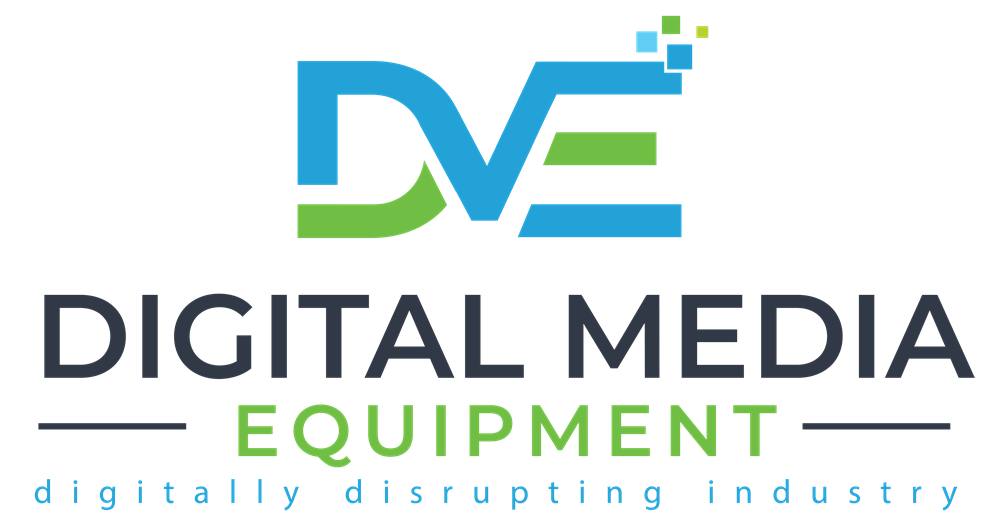Learn How To Create A Website That Earns Money !
Many people who want to get an online presence, build a brand, or sell online will need to create a website. A website is a resourceful tool to help you connect with individuals around the world.
Your website is going to be your starting point to showcase your brand through an online presence.
However, building your website may feel overwhelming or challenging to those who are not the most tech-savvy. If you’re looking at how to create a quality website, you need to understand,
- Why you’re doing it
- What to expect
- The steps to create the website.
Why Should You Create A Website?
First, let’s start with why creating a website is smart. Before they found the Internet, there were ways to communicate with individuals for professional and personal reasons.
However, after the Internet came into existence, the progress of human activity significantly improved with business, professionalism, and personal goals. We are in a technology-driven world that relies on a presence whether it’s online or offline to be successful.
Since a website gives you the tools to reach out to the world, it is a must-have.
The statistical growth of individuals who are creating a website showed that their success rates were higher than those who communicated or grew through brick-and-mortar.
A website delivers individuals a unique way to find new products, research different destinations, or create a brand and awareness that supports their business or personal goals.
A website has a lot of popular reasons that are beneficial to not just an individual but to society. Here are a few examples and reasons one should create a website.
Branding And Presentation
A website offers businesses to feature themselves to set themselves apart from their competitors. It offers and encourages customers to see what the core business values are or to get other ideas for services and goods. Websites offer presentations that are eye-capturing and are an easier way to purchase products and services.
Businesses have more authority when showing their transparency with their platforms, contact data, and services. And more when a business gains more authority, they are likely to attract more traffic and customers to appreciate and use the business.
This makes them more successful in short-term goals and long-term goals. Websites offer fulfillment of client needs and business needs in one setting.
It can also deliver consumers with reviews and research that they might not get by going to a walk-in store.
Communication
A website is a template to publish videos, business content, pictures, products, and brands. However, it also provides a faster and more efficient communication means. The communication aspects of a website give companies growth progress and retention rate with their customers.
If you’re an individual creating a brand or starting a blog site, you will have the most powerful marketing in society today.
Your Website, Your Edge
A website increases credibility and authority. It is a perfect tool to showcase services and businesses. But it’s also a tool to establish your mark to offer you the ability to have a competitive edge. It is one of the best marketing platforms that can be permanent or temporary.
It provides opportunities and flexibility throughout the entire year and gives you the ability to express yourself or your business as you want others to see you.
These are just a few reasons why someone would want to create a website. There are thousands of other reasons websites are essential in today’s era. Whether you’re using it to just share information, create an e-commerce platform, increase communication, have education opportunities, or have a resource at your fingertips.
A website delivers everything you need to make your mark in the world.
What To Expect With A Website
Now that you understand why many people choose to build out their website, the next step is to understand what to expect when you design your website. Websites take a lot of work to maintain, and they require consistent maintenance.
If you are an individual who would rather just let a professional website, there are plenty of web developers and designers who can handle your project with your ease. You can research good SEO specialists or professional counsel to get ideas if you’re stuck.
However, if you are ambitious and want to learn how to build your website, then you need to make a plan before you launch it.
Plan And Research
There are a few things that are on the roadmap to your website. Your first step is planning and research. The more you inform yourself about websites, platforms, and common web terms, the faster you can get to building the website.
After you have compiled a lot of research, and understand how websites are created and what it’s required to maintain them, you can then consider building your website.
Your first website may not have all the glitz and glamour that some professional websites have, however, it’s a learning curve when you first start. So have a few expectations that there is going to be that learning aspect that may seem frustrating occasionally.
Back-End Process And Marketing
Next, after you are more informed and have started considering how you want your website built and what you want to showcase through that website, you will need to dive into the back-end process.
This includes finding a host, domain name, and potential developer. All three things are the primary sources to initiate and jumpstart the website.
Lastly, you want to expect that you’re going to need to drive traffic to your website. A website requires marketing and professional search engine optimization to get seen by people who research online.
You’re going to need to expect the maintenance behind some marketing and someone else, or if could do SEO work you have the time, you can dive into it yourself. You will also want to have consistent fresh content or information for those that seek your brand or business.
Having fresh content sets you apart from your competitors and is what keeps people coming back to see your website.
These are just a few expectations to know before starting to build your website. However, if you set up a plan with objectives and goals, and you understand the website development process, then you will be well on your way to creating your website.
How Do You Make Your Own Website?
Creating your website can come in a variety of distinct steps depending on what your plans are for the website. There is a lot of information on how to create a website and there are resources available to help you do it.
However, if you’re looking to create your website or at least dabble into it on your own, there are a few things to get you started.
1. Build Your Brand
The first thing that you’re going to need to do is to consider the type of brand, service, or type of information you want to give to people. Your brand is going to be the first impression that anyone who comes to your website will notice. For example, if you want to sell vintage products, then your website needs to showcase the vintage aspects and what sets you apart from other vintage resellers.
2. Choose A Domain Name
Next, you’re going to use the brand you created and come up with a name that is easy to remember and to type out. You then will need to choose a domain name that will suit your brand and your company the best.
A domain name is the Internet URL that sends people to your website. Your domain name is a unique URL address that is not used by anybody else. For example, let’s stay with the vintage product idea.
Your domain name may look like this: www.vintage products56.com/. When people type in that specific URL online in they will get directed to your website.
The domain name is usually the company name or the blog name to make it easier for people to find you. Choose this part of your website carefully, as it will be the key that will direct people to you through the Internet.
After you decide on a domain name, you need to purchase it. There are plenty of domain name sellers online.
Sellers like GoDaddy, GoogleDomains, and Namecheap, are just a few organizations where you can purchase a domain name.
These sellers will allow you to search to see if the domain name is used by anyone else and let you get other ideas for unique domain names if they have taken it. Again, this is a critical step in starting a blog site, so choose your domain name very carefully.
3. Find A Host
So you have built your brand and bought your domain name. You will now need to find a host platform to rest your domain name and website on. A host is an Internet-based house for your website. Think of a host as your own home, it provides shelter and protection.
A host is a place where your website lives to be live on the Internet. There are many types of hosting companies with a variety of payment plans to suit any type of budget.
Your host will give you back-end access to your website. The web host is a secure spot for all of your files and website content that is constantly active and live on the Internet.
Some sellers you get your domain name from offer hosting options, however, do your research before choosing one over the other.
Some features that you can consider with a host are custom email accounts, unlimited capacity, free domain name, SSL certificates, customer supports, and access to WordPress. These features will benefit you and your website.
A good provider will offer these features with their plans. Some web hosting companies to compare are BlueHost, HostGator, GreenGeeks, and SiteGround. If you’re looking for budget-friendly options, you can consider free website builders that offer hosting plans.
However, you may not find as many features with the website builders as you may with a host.
4. Register Your Domain Name With The Host
Your next step is to get your plans set up with your host and register your domain name with it. If you bought your domain name from an alternate seller and chose a different host, you’re going to have to go back to the domain name seller and transfer the domain name over to the host.
There are forums on most of the meaning seller’s websites where you can learn how to transfer the domain name over to your host. You will learn how to update your name server in this step. The name server will allow you to use your domain name on other websites as you see fit.
The best way to learn how to do this step is to look at the frequently asked questions on the seller’s websites. Transferring your domain name or registering it should only take a short time. However, once completed, you’ll be able to build your website.
5. Choose A CMS Platform
The CMS platform is the area in which you build your website. This is the part where you can have templates to design your website and put in content to fill your website. We know CMS as the Content Management System. It will allow you to manage all of your content and landing pages. The CMS will allow you to put all your stuff together and help you design your website.
Choosing the right CMS will make your website more organized. Some things to consider are:
- Does it have the ability to implement web traffic strategies?
- Is it scalable?
- Does it support omnichannel?
- Will it support over one software?
- Is it a reliable and tested CMS?
- Is it user-friendly?
- Can you use plugins or apps with it?
Some of the most popular CMS platforms are WordPress, Joomla, Drupal, and WooComerce. Just do a little research before choosing one and find one that best fits you and your style. Once you get your CMS started, you can enter it into your host, and begin building the website.
6. Build Your Website And Have Fun
When you are building the website. Take the time to choose the right layout, and content before making your website live. You want to make sure the site functions fully and is user-friendly. Remember, your website is going to have an enormous impact on your brand and will make an impression the first time someone visits it.
As such, I recommend that you experiment with a few features and enjoy exploring them. The process of building your website can be a grand adventure from which you will gain a lot of knowledge. Consequently, it is essential to follow the steps, ask questions, and conduct research to ensure that you are on the right track. In no time, you will have a website that you can be proud to run.




Leave a Reply
Want to join the discussion?Feel free to contribute!